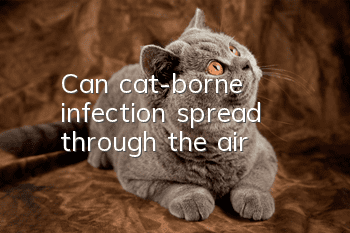Can cat-borne infection spread through the air?

Cat-to-abdominal transmission does not occur through the air. It is usually a gastrointestinal infection or transmitted through vector insects. It can also be transmitted vertically through the placenta. Feline-borne peritonitis is a chronic progressive infectious disease of cats caused by feline infectious peritonitis virus. It is characterized by peritonitis, accumulation of large amounts of ascites and a high fatality rate. It can infect cats of all ages, ranging from 1 to 2 years old. Cats over 11 years old and older cats are most affected.
Symptoms of feline contagion:
1. In the early stage of feline contagion, the symptoms may include body weight loss, depression, and loss of appetite. The cat is not as lively as usual. Becoming lethargic or inactive, eating little or nothing for several consecutive meals.
2. Cat abdominal transmission is usually accompanied by persistent fever. After taking antipyretic injections to suppress it, the fever will recur the next day. Under normal circumstances, it cannot be solved by ordinary antipyretic methods.
3. The cat’s abdominal girth increases and it is difficult to breathe. The most obvious symptoms of wet abdominal distension are an enlarged belly and a fluctuating feeling like a water ball. It may be ascites, difficulty breathing, mouth breathing, and abdominal pain. Breathing and other conditions may indicate pleural effusion.
4. The biggest symptom of dryness in cats in the late stage of abdominal transmission is abnormalities in the eyes, such as cloudy eyeballs, pus in the lower eyelids, smaller pupils, and decreased vision.
- Why cats can’t take baths often
- Can a cat that has been infected with feline distemper for two months be cured?
- How do cats get feline transmission?
- Can Dapai be used to deworm cats? Is it suitable for cats?
- When do cats reach sexual maturity?
- Are Siamese cats Egyptian cats?
- What to do if British Shorthair cats are constipated? Characteristics of British Shorthair constipation!
- Why does a cat open its mouth to breathe?
- What should I do if my cat loses hair seriously in winter?
- Do cats like to eat fish? The smell of fish will attract cats



